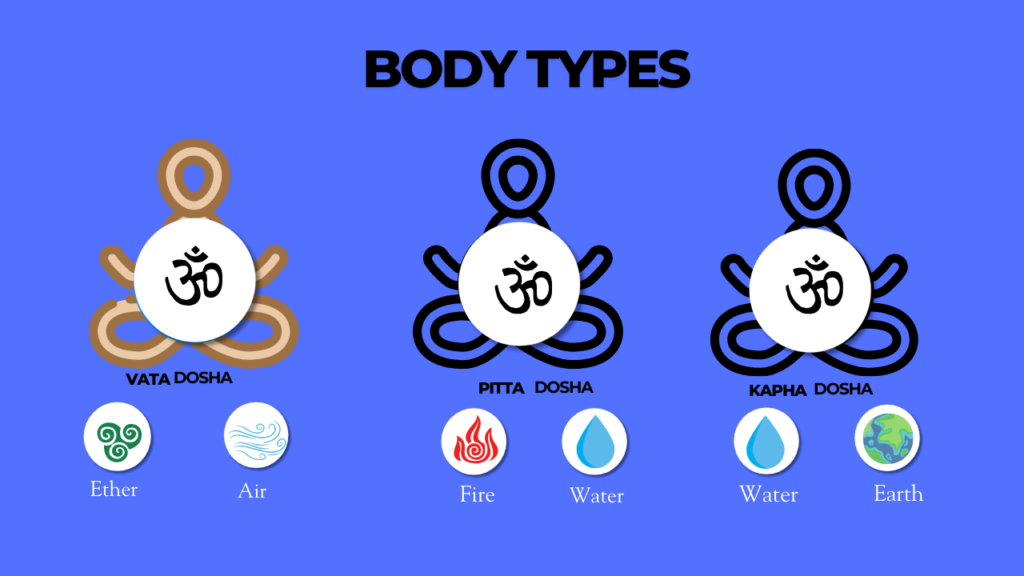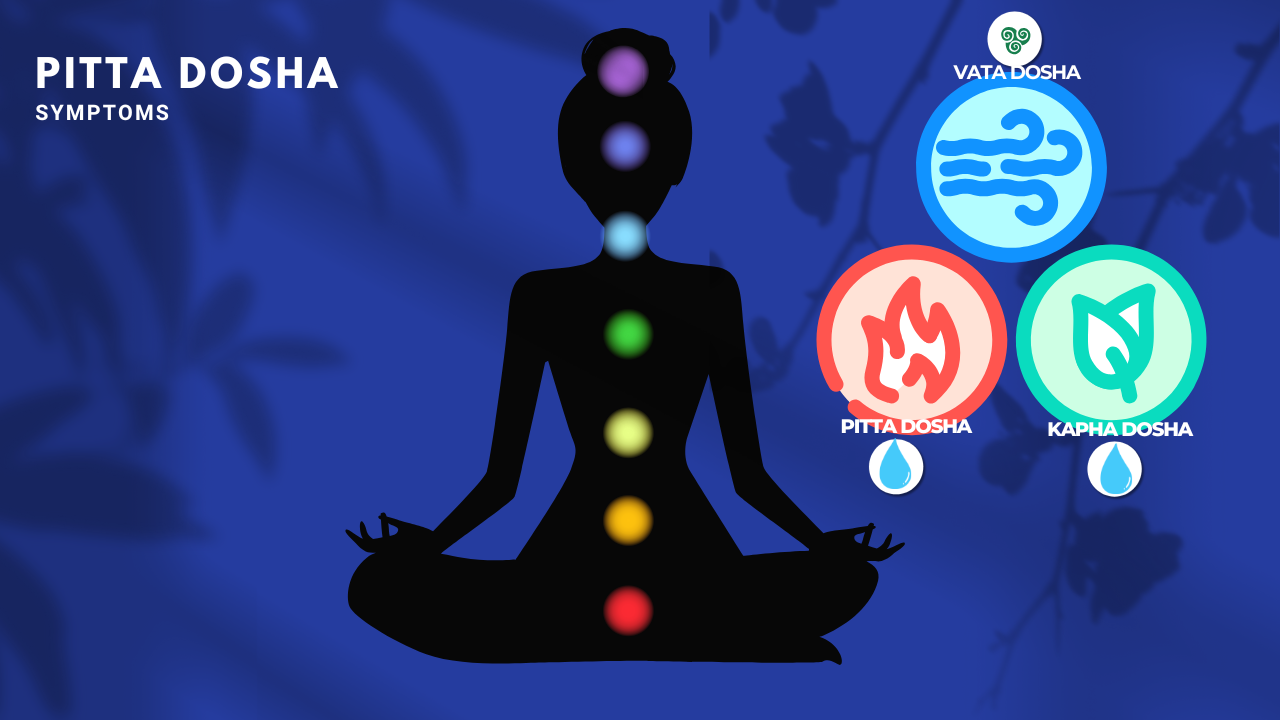Introduction
Three Ayurvedic doshas or energetic forces are Vata (Energy of movement), Pitta (Energy of transformation) and Kapha ( Energy of lubrication and structure). Each of these doshas has a specific function in our body. Our physical and emotional well-being may be greatly impacted if any of these doshas get out of balance.

The fire and water elements are represented by the Pitta Dosha in Ayurveda, which controls the body’s metabolism, digestion, and transformation. Pitta guarantees vitality, keen intellect, and a radiant complexion when it is in equilibrium. When out of balance, though, it can cause a number of mental and physical problems. To keep your body and mind in balance, you must be aware of the signs of Pitta imbalance. This article discusses 7 important Pitta Dosha Symptoms that you shouldn’t overlook and offers practical remedies for a natural balance restoration.
Table of Contents



What is Pitta Dosha?
Along with Vata and Kapha, Pitta Dosha is one of the three basic energies (Doshas) in Ayurveda. Pitta is associated with qualities such as intensity, lightness, oiliness, heat, and sharpness. It regulates essential functions like :
- Metabolism and energy production
- Digestion and food absorption.
- Perception and vision
- Skin health and complexion
- Emotional control, including focus and ambition.
Pitta encourages both mental and physical agility when it is balanced. When out of balance, still, it shows up as symptoms that impair general health.
The Importance of Identifying Pitta Dosha Symptoms Early
Chronic health problems can be avoided by early detection of Pitta Dosha symptoms. Ignoring these symptoms could result in long-term imbalances that impact mental stability, skin health, digestion, and other areas. You can regain balance and avoid consequences by taking quick care of these symptoms.
7 Key Signs of Pitta Dosha Symptoms
1. Overheating and Excessive Sweating
Pitta’s fiery nature frequently raises body temperature, which results in uncomfortable sweating. This can be triggered by hot weather, spicy foods, or vigorous physical activities.
- Manifestation: Even in mild weather, feeling overheated, flushed and sweating excessively.
- Remedy: Include hydrating meals like coconut water, cucumber and watermelon. Avoid caffeine, alcohol,hot and spicy foods. To stay cool, dress in light, breathable clothing.
2. Frequent Acid Reflux or Heartburn
Acid reflux or heartburn may result from excessive stomach acid production caused by a Pitta imbalance, which frequently interferes with digestion.
- Manifestation: Symptoms include discomfort after eating, a foul taste in the tongue, or a burning feeling in the chest.
- Remedy: Avoid clear of spicy, oily or acidic foods and eat small, frequent meals. Incorporate cooling herbs into your diet, such as mint, coriander and fennel. For relief, sip buttermilk with a bit of cumin
3. Skin Irritations and Inflammation
Pitta regulates the health of the skin and an imbalance might show up as redness, acne, rashes, or excessive oiliness.
- Manifestation: Redness or breakouts, along with hot, irritated, or itchy skin.
- Remedy: Apply soothing natural remedies such as sandalwood paste or aloe vera gel. Incorporate cooling herbs into your skincare routine, such as turmeric and neem. Avoid too much sun exposure.
4. Anger and Irritability
An emotional Pitta imbalance can lead to increased irritation, impatience and anger. This results from Pitta’s fiery character disrupting mental balance.
- Manifestation: Anger, irritation, or trouble unwinding.
- Remedy: Engage in relaxing activities like yoga, meditation, or deep breathing techniques. Use soothing colours like blue or green to surround oneself and use cooling aromas like lavender or sandalwood for aromatherapy.
5. Sensitivity to Heat
Exhaustion and irritation are common symptoms of Pitta imbalance, which makes people uncomfortable in humid and hot environments.
- Manifestation: Tiredness in warm climates, an affinity for air conditioning and a dislike of heat.
- Remedy: Drink water flavored with rose petals or mint to stay hydrated. Avoid clear of difficult assignments during the hottest parts of the day. For massages, use cooling oils such as coconut or sunflower oil.
6. Loose Stools or Diarrhea
An imbalance in pitta, which controls digestion, can result in irregular bowel movements, which are frequently accompanied by loose stools or diarrohea.
- Manifestation: Frequently using the restroom, particularly after eating greasy or spicy meals.
- Remedy: Consume cool, bland foods like bananas, yogurt and rice. Avoid clear of spicy and oily foods. Sip herbal teas prepared with chamomile or fennel.
7. Intense Hunger and Thirst
Excessive thirst and a voracious hunger brought on by an overactive Pitta can frequently result in overeating or dehydration.
- Manifestation: Frequently feeling thirsty or hungry, sometimes to an uncomfortable degree.
- Remedy: The solution is to incorporate hydrated meals into your diet and maintain regular meal timings. Avoid skipping meals and make sure you get enough water throughout the day.
Causes of Pitta Dosha Imbalance
Pitta Dosha imbalance can be caused through a number of things, such as:
- Diet:: Eating too many meals that are acidic, greasy, or spicy.
- Lifestyle: Excessive heat exposure, stress, sleep deprivation, and overwork.
- Environment: hot, humid conditions or prolonged exposure to the sun.
Staying conscious of all these triggers will enable you to take preventative measures to keep your equilibrium.
How to Balance Pitta Dosha
A mix of dietary, lifestyle, and environmental changes are necessary to balance Pitta. Here are some useful pointers:
Dietary Tips
- Include cooling foods like cucumbers, melons, leafy greens, and coconut water.
- Avoid spicy, fried, or acidic foods that aggravate Pitta.
- Use cooling herbs like coriander, fennel, and mint in your meals.
- Stay hydrated with water, herbal teas, or drinks like buttermilk and aloe vera juice.
Lifestyle Adjustments
- Practice relaxation techniques such as yoga, meditation, and pranayama.
- Maintain a regular sleep schedule and ensure adequate rest.
- Avoid overworking and take breaks to relax.
- Wear light, breathable fabrics and avoid excessive sun exposure.
Ayurvedic Remedies
- Use cooling oils like coconut, sandalwood, or sunflower oil for massages (abhyanga).
- Incorporate herbs like neem, turmeric, and amla into your daily routine.
- Try Ayurvedic treatments like Shirodhara or Pitta-pacifying teas.
Conclusion
Your body and mind may return to balance by recognizing and treating these seven significant symptoms of Pitta Dosha imbalance. Ayurveda provides ageless knowledge to help you find balance and avoid challenges in the future. Whether it’s through Ayurvedic treatments, dietary modifications, or lifestyle changes, being proactive can greatly improve your well-being.
Remember that you can live a better, more balanced life by paying attention to your body’s signals and making thoughtful decisions. Start today on the path to Pitta balance right now!
FAQs
Q.1. What is Pitta Dosha in Ayurveda?
A. Pitta Dosha is one of the three primary energies in Ayurveda, responsible for digestion, metabolism, and transformation. It is associated with the elements of fire and water.
Q.2. How do I know if I have a Pitta imbalance?
A. Common signs of Pitta imbalance include excessive body heat, acid reflux, skin irritations, anger, and sensitivity to heat.
Q.3. What foods should I avoid for a Pitta imbalance?
A. Avoid spicy, fried, and acidic foods, as they can aggravate Pitta. Instead, focus on cooling and hydrating foods like cucumber, watermelon, and leafy greens.
Q.4.Can Pitta imbalance affect mental health?
A. Yes, a Pitta imbalance can cause emotional issues like anger, impatience, and irritability
Q.5. How can I naturally balance my Pitta Dosha?
A. Adopt a Pitta-pacifying diet, practice calming activities like yoga and meditation, and use cooling remedies such as coconut oil and aloe vera.
Q.6. Are there specific herbs for Pitta balance?
A. Yes, herbs like coriander, fennel, mint, neem, and turmeric are excellent for balancing Pitta.
Q.7.Can lifestyle changes help manage Pitta symptoms?
A. Absolutely! Regular sleep, stress management, and avoiding excessive heat can significantly help manage Pitta symptoms.
Q.8.What are the best drinks for Pitta Dosha?
A. Cooling beverages like coconut water, herbal teas (fennel or mint), and buttermilk are ideal for Pitta.
Q.9. Is Pitta Dosha more dominant in certain seasons?
A. Yes, Pitta tends to dominate during the summer and early fall due to the hot and humid weather.
Q.10. When should I consult an Ayurvedic practitioner for Pitta imbalance?
A. If symptoms persist despite dietary and lifestyle adjustments, it’s best to consult an Ayurvedic expert for personalized guidance.

